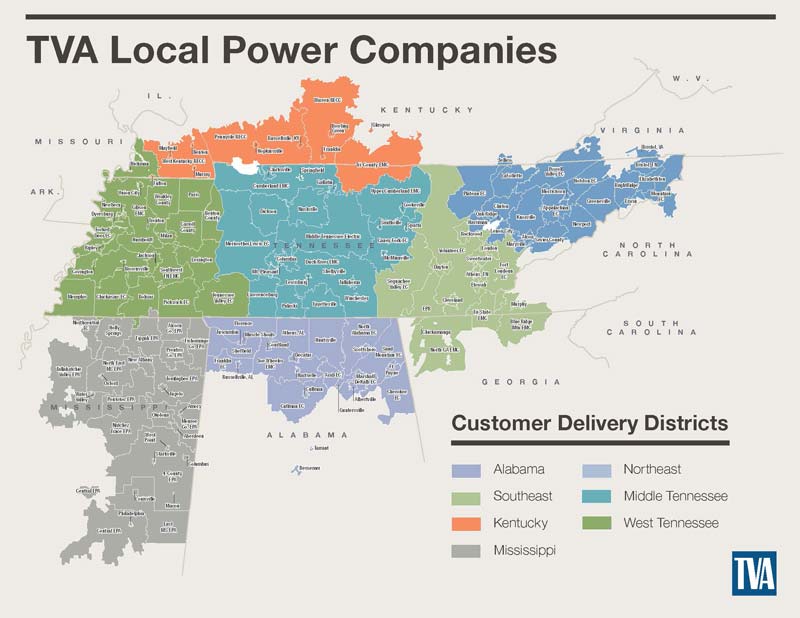How Electricity Gets to You
The Tennessee Valley Authority’s production of electric power is pretty impressive, but that’s only half of what it takes to power the Tennessee Valley region. The second half of the story is about the transmission and distribution of power—actually moving the electricity to homes, schools, farms, and businesses.
TVA has one of the largest and best-running electricity transmission systems in the world. It includes 16,400 miles of power lines. That’s enough to cross the entire United States more than six times!
Electricity is produced at a TVA generating plant and carried over high-voltage transmission lines to delivery points at local companies that distribute the power. Substations and transformers reduce voltage to levels that can be used by homes and businesses.
How Electricity Transmission Works
Electric currents are sent out from power plants at high voltages to get the electricity to travel where it needs to go. Tall metal transmission towers keep the power lines that carry electricity far off the ground, and “electricity-proof” insulators made of glass or porcelain keep the electric current from leaving the power lines and entering the metal towers.
Factories often need high voltage to run their heavy machinery. At high-voltage substations, power lines enter and leave through large insulators.
Medium-voltage substations reduce the voltage for users that don’t need higher voltages. Generally, the electricity that travels to neighborhoods where people live is reduced to a lower level by passing through what’s called a “step-down transformer."
The electric current moves from TVA’s transmission lines to the distribution lines of local power companies. These lines are strung on the tall wooden poles you see all around you. In some neighborhoods the wires are buried underground.
Large metal boxes, found either at the top of a pole or on the ground, contain transformers that help lower the voltage to 120/240 volts. That’s the voltage we use in our homes. Finally, the current passes through an electric meter. The meter measures how much electricity is used in a home, school, or business.



